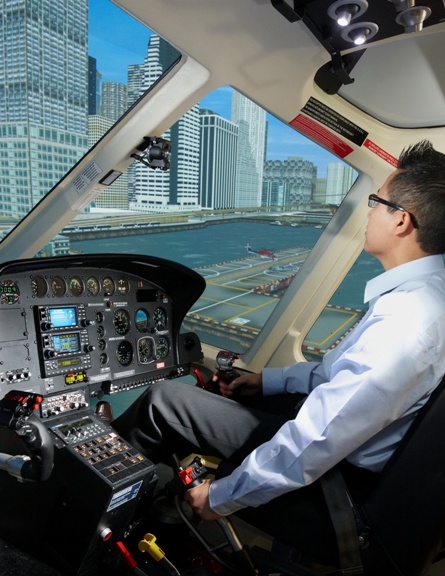The steady stream of visitors to CAE's new 3000 Series simulator, a two-storey white dome dominating the floor at Heli-Expo, had one comment in common - "wow".
Developed in part from full immersion technology created for US military special forces, the 3000 Series creates virtual training environments that allow pilots to accurately train in a simulator rather than in an aircraft, the source of 25% of all helicopter accidents, according to CAE.
The system features the CAE Tropos-6000 image generator with 220° horizontal by 80° vertical field of view presented on a direct projection dome that includes the view through the chin windows.
 |
|---|
© CAE |
Along with a three degree-of-freedom vibration platform and the ability to simulate night vision goggles and forward-looking infrared, the 3000 series provides high-definition features such as animation of rotor downwash and recirculation effects, high-density urban environments, moving objects and artificial intelligence inputs for people in the scenarios, a first for civil helicopter simulators. The system can also be purchased with a six degree-of-freedom full-motion base.
"What we all learned in the last couple of years is that there's definitely a gap in scenario training for operators," says Lauzon. His insight is gained from a helicopter advisory board that CAE assembled from its helicopter industry customers, including pilots, operators, manufacturers and insurers.
CAE to date has delivered more than 100 simulators for nine different helicopter manufacturers, including AgustaWestland, Bell, Eurocopter, MD Helicopters and Sikorsky, primarily for larger twin-turbine models.
Not surprisingly, cost has been the "main barrier" preventing more lower-end operators from using simulators, says Lauzon. "The customer is looking at operating cost as the litmus test," he says, adding that the general sense of the community is that training costs must be "similar" to operating costs.
- All the latest news from Heli-Expo 2010
Source: Flight International























